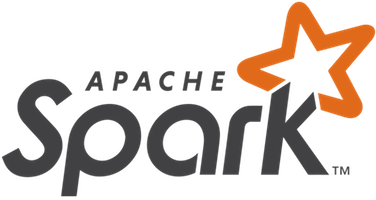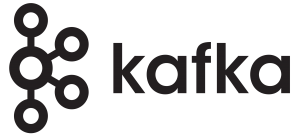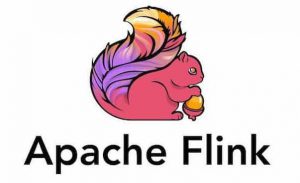Introduction
In the ever-evolving landscape of data analytics, businesses and organizations are constantly seeking innovative ways to harness the power of big data to gain valuable insights and make informed decisions. Big data analytics tools play a pivotal role in this process, as they enable professionals to process, analyze, and visualize vast amounts of data efficiently. In this article, we will explore some of the most recommended big data analytics tools, providing coding examples where applicable, to help you make informed decisions when selecting the right tool for your analytical needs.
Introduction to Big Data Analytics Tools
Big data analytics tools are software applications or platforms that facilitate the collection, storage, processing, and analysis of large volumes of data. These tools are essential for organizations looking to derive meaningful insights from their data, which can lead to better decision-making, improved operational efficiency, and a competitive edge in today’s data-driven world.
The choice of a big data analytics tool depends on various factors, including the organization’s specific requirements, data volume, data sources, and budget constraints. Below, we will discuss some of the most recommended big data analytics tools, their features, and provide coding examples where appropriate.
1. Apache Hadoop

Apache Hadoop is a widely adopted open-source framework for distributed storage and processing of large datasets. It uses the Hadoop Distributed File System (HDFS) for storage and the MapReduce programming model for batch processing. Additionally, Hadoop has evolved to support various other tools and frameworks for real-time processing, such as Apache Spark.
Key Features:
- Scalability: Hadoop can scale horizontally to handle petabytes of data.
- Fault Tolerance: It can recover from hardware failures.
- Ecosystem: Hadoop has a rich ecosystem with tools like Hive, Pig, and HBase.
Coding Example: Word Count using Hadoop MapReduce
import java.io.IOException;
import java.util.StringTokenizer;import org.apache.hadoop.fs.Path;
import org.apache.hadoop.io.IntWritable;
import org.apache.hadoop.io.Text;
import org.apache.hadoop.mapreduce.Job;
import org.apache.hadoop.mapreduce.Mapper;
import org.apache.hadoop.mapreduce.Reducer;
import org.apache.hadoop.mapreduce.lib.input.FileInputFormat;
import org.apache.hadoop.mapreduce.lib.output.FileOutputFormat;
public static class TokenizerMapper
extends Mapper<Object, Text, Text, IntWritable>{
private Text word = new Text();
) throws IOException, InterruptedException {
StringTokenizer itr = new StringTokenizer(value.toString());
while (itr.hasMoreTokens()) {
word.set(itr.nextToken());
context.write(word, one);
}
}
}
extends Reducer<Text,IntWritable,Text,IntWritable> {
private IntWritable result = new IntWritable();
Context context
) throws IOException, InterruptedException {
int sum = 0;
for (IntWritable val : values) {
sum += val.get();
}
result.set(sum);
context.write(key, result);
}
}
Configuration conf = new Configuration();
Job job = Job.getInstance(conf, “word count”);
job.setJarByClass(WordCount.class);
job.setMapperClass(TokenizerMapper.class);
job.setCombinerClass(IntSumReducer.class);
job.setReducerClass(IntSumReducer.class);
job.setOutputKeyClass(Text.class);
job.setOutputValueClass(IntWritable.class);
FileInputFormat.addInputPath(job, new Path(args[0]));
FileOutputFormat.setOutputPath(job, new Path(args[1]));
System.exit(job.waitForCompletion(true) ? 0 : 1);
}
}
2. Apache Spark

Apache Spark is another open-source big data analytics framework known for its speed and ease of use. It provides an interface for programming entire clusters with implicit data parallelism and fault tolerance. Spark offers a wide range of libraries and tools for various data processing tasks, such as Spark SQL, Spark Streaming, and MLlib for machine learning.
Key Features:
- Speed: Spark can process data in-memory, leading to faster processing.
- Ease of Use: It offers high-level APIs in languages like Scala, Python, and Java.
- Versatility: Spark supports batch processing, interactive queries, and streaming.
Coding Example: Word Count using Spark in Scala
import org.apache.spark._
import org.apache.spark.SparkContext._def main(args: Array[String]) {
val conf = new SparkConf().setAppName(“WordCount”)
val sc = new SparkContext(conf)
val wordCounts = textFile.flatMap(line => line.split(” “))
.map(word => (word, 1))
.reduceByKey(_ + _)
}
}
3. Apache Kafka

Apache Kafka is a distributed streaming platform used for building real-time data pipelines and streaming applications. It is particularly suitable for handling high-throughput, fault-tolerant, and scalable data streams. Kafka enables the efficient ingestion and processing of data in real-time, making it a valuable tool for organizations with real-time analytics needs.
Key Features:
- Publish-Subscribe Model: Kafka uses a publish-subscribe model for real-time data streams.
- Durability: It provides data durability through replication.
- Scalability: Kafka can handle a massive number of events per second.
Coding Example: Producing and Consuming Messages in Kafka using Java
import org.apache.kafka.clients.producer.KafkaProducer;
import org.apache.kafka.clients.producer.Producer;
import org.apache.kafka.clients.producer.ProducerConfig;
import org.apache.kafka.clients.producer.ProducerRecord;
import org.apache.kafka.clients.consumer.Consumer;
import org.apache.kafka.clients.consumer.ConsumerConfig;
import org.apache.kafka.clients.consumer.KafkaConsumer;
import org.apache.kafka.clients.consumer.ConsumerRecords;
import org.apache.kafka.clients.consumer.ConsumerRecord;
import java.util.Properties;public static void main(String[] args) {
// Producer
Properties producerProps = new Properties();
producerProps.put(ProducerConfig.BOOTSTRAP_SERVERS_CONFIG, “localhost:9092”);
producerProps.put(ProducerConfig.KEY_SERIALIZER_CLASS_CONFIG, “org.apache.kafka.common.serialization.StringSerializer”);
producerProps.put(ProducerConfig.VALUE_SERIALIZER_CLASS_CONFIG, “org.apache.kafka.common.serialization.StringSerializer”);
Producer<String, String> producer = new KafkaProducer<>(producerProps);
producer.send(record);
producer.close();
Properties consumerProps = new Properties();
consumerProps.put(ConsumerConfig.BOOTSTRAP_SERVERS_CONFIG, “localhost:9092”);
consumerProps.put(ConsumerConfig.GROUP_ID_CONFIG, “my-group”);
consumerProps.put(ConsumerConfig.KEY_DESERIALIZER_CLASS_CONFIG, “org.apache.kafka.common.serialization.StringDeserializer”);
consumerProps.put(ConsumerConfig.VALUE_DESERIALIZER_CLASS_CONFIG, “org.apache.kafka.common.serialization.StringDeserializer”);
Consumer<String, String> consumer = new KafkaConsumer<>(consumerProps);
ConsumerRecords<String, String> records = consumer.poll(Duration.ofMillis(100));
for (ConsumerRecord<String, String> record : records) {
System.out.printf(“Offset = %d, Key = %s, Value = %s%n”, record.offset(), record.key(), record.value());
}
}
}
}
4. Apache Flink

Apache Flink is an open-source stream processing framework for big data processing and analytics. It offers low-latency and high-throughput processing of streaming data, making it suitable for real-time analytics, event-driven applications, and batch processing. Flink provides APIs for both batch and stream processing.
Key Features:
- Event Time Processing: Flink supports event time processing for handling out-of-order events.
- Stateful Processing: It allows for maintaining state across events.
- Versatility: Flink supports batch processing, streaming, and iterative algorithms.
Coding Example: Word Count using Flink in Java
import org.apache.flink.api.common.functions.FlatMapFunction;
import org.apache.flink.api.java.tuple.Tuple2;
import org.apache.flink.streaming.api.datastream.DataStream;
import org.apache.flink.streaming.api.environment.StreamExecutionEnvironment;
import org.apache.flink.util.Collector;public static void main(String[] args) throws Exception {
final StreamExecutionEnvironment env = StreamExecutionEnvironment.getExecutionEnvironment();
.flatMap(new Tokenizer())
.keyBy(0)
.sum(1);
}
public void flatMap(String value, Collector<Tuple2<String, Integer>> out) {
String[] words = value.split(” “);
for (String word : words) {
out.collect(new Tuple2<>(word, 1));
}
}
}
}
5. Tableau

Tableau is a leading data visualization and business intelligence tool that allows users to create interactive and shareable dashboards. While it’s not a big data processing tool per se, it’s a powerful tool for exploring and visualizing data generated by big data analytics platforms. Tableau can connect to various data sources, including Hadoop, Spark, and more.
Key Features:
- Interactive Dashboards: Tableau enables the creation of interactive and dynamic visualizations.
- Data Connectivity: It can connect to a wide range of data sources.
- Collaboration: Tableau Server allows for sharing and collaboration on reports and dashboards.
Coding Example: Creating a Simple Tableau Dashboard
While Tableau is primarily a visual tool, here’s a simple example of creating a bar chart to visualize data:
- Connect to your data source (e.g., a CSV file or a database).
- Drag and drop the desired dimension (e.g., Category) to the Columns shelf.
- Drag and drop a measure (e.g., Sales) to the Rows shelf.
- Tableau will automatically create a bar chart. You can further customize it by adding filters, labels, and other elements.
Conclusion
In the world of big data analytics, selecting the right tool is crucial for extracting valuable insights from vast datasets. The choice of tool depends on various factors, including the organization’s specific needs, data volume, and processing requirements. The tools discussed in this article—Apache Hadoop, Apache Spark, Apache Kafka, Apache Flink, and Tableau—offer a diverse set of capabilities for different big data analytics tasks.
Whether you need batch processing, real-time streaming, or interactive visualization, there’s a tool that can meet your needs. Additionally, the provided coding examples offer a glimpse into how these tools can be used in practice. Ultimately, the right tool for your big data analytics journey will depend on your unique requirements and objectives.